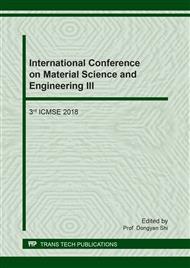p.126
p.132
p.137
p.144
p.148
p.154
p.159
p.165
p.170
Hydrochemistry Research of Intercrystalline with Pore Brine and Pre-3D Modelling of Heibeiwadi Brine Deposit
Abstract:
Intercrystalline and pore brine develop extensively in the Heibewadi research area which is located at south foot of Altun mountain of Qaidam basin. In central area, intercrystalline brine’s depths range from 5m to 90m. In northwest, south area and central deeper area, pore brine develops under intercrystalline brine layer. The 2 types of aquifers have strong yield property, TDS is 200-350g/l with average of 276g/l. Main salt compound can be mined out economically. According to analysis result of intercrystalline brine, TDS, Cl-, Na+, K+, Mg2+, Li+ irons’ grades are very steady. That mean intercrystalline brine exist in the water-salt system under balance. Only the stability of Ca2+ and SO42- are slightly poor. According the Kurtosis characteristics analysis, Ca2+, SO42- are no-normal positively platykurtic distribution, K+, Cl- and PH are normal positively platykurtic distribution. These 2 groups fall into a sub-class. And the combined with normal negatively platykurtic distribution-TDS and fall into platykurtic distribution group. Mg2+, Li+ are normal positively peaked distribution; Na+ is normal negatively peaked distribution. They all belong to peaked distribution group. According to Na+, K+, Mg2+//Cl-H2O quarternary phase diagram and Na+, K+, Mg2+//Cl-SO42-H2O pentabasic phase diagram, the chlorite and magnesium sulfate subtype have different hydro chemical characteristics and salting-in and salting-out rules.
Info:
Periodical:
Pages:
170-175
Citation:
Online since:
October 2018
Authors:
Price:
Сopyright:
© 2018 Trans Tech Publications Ltd. All Rights Reserved
Share:
Citation:


